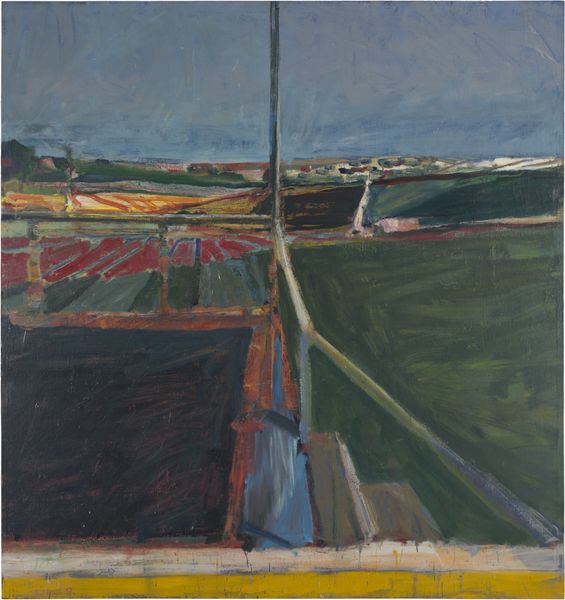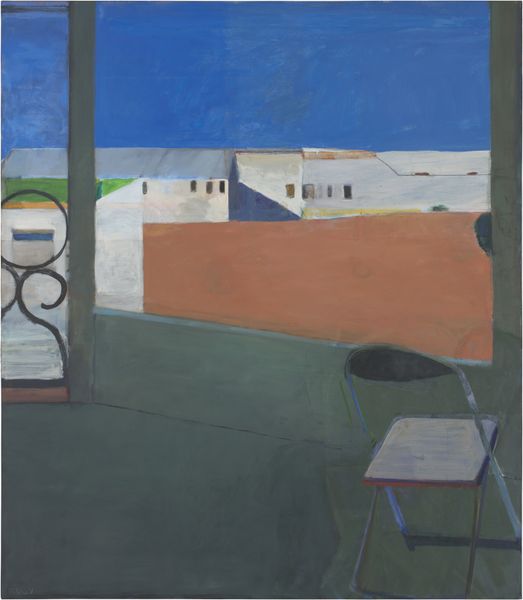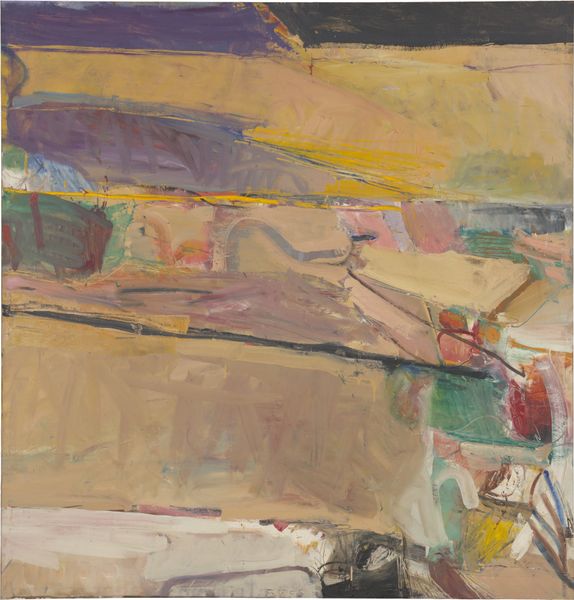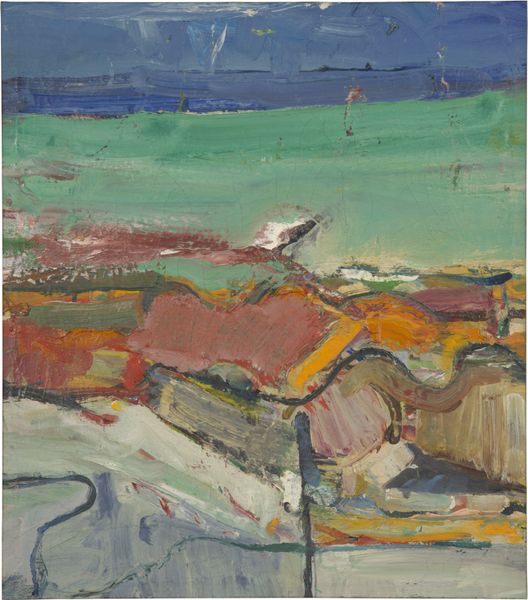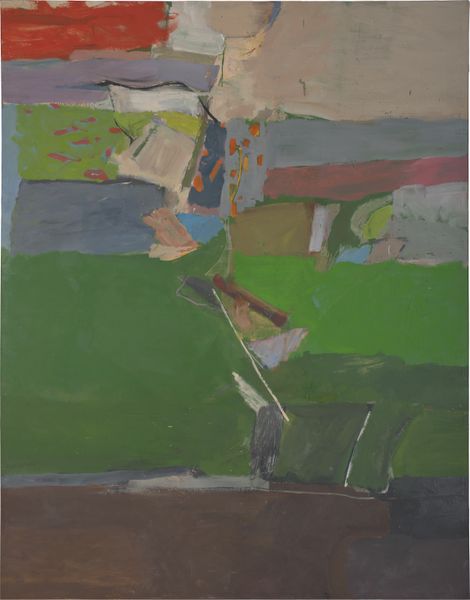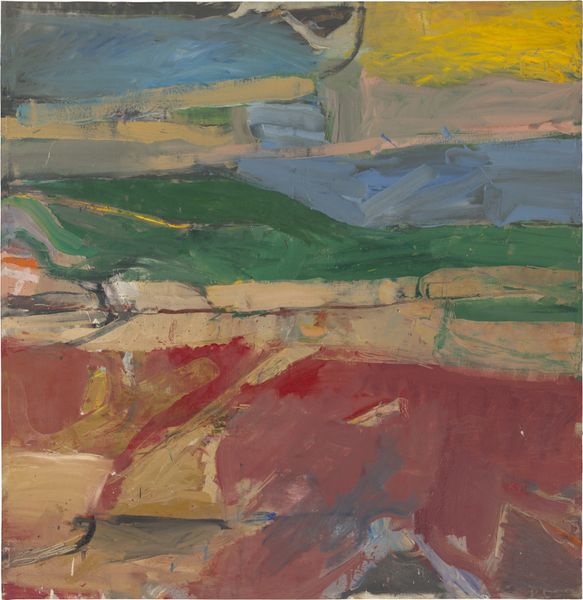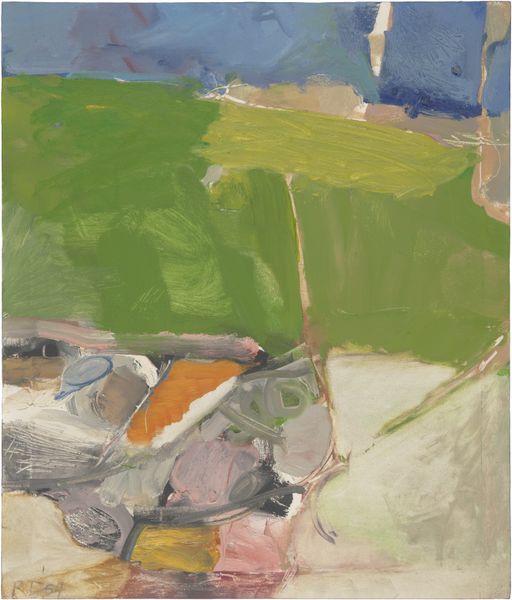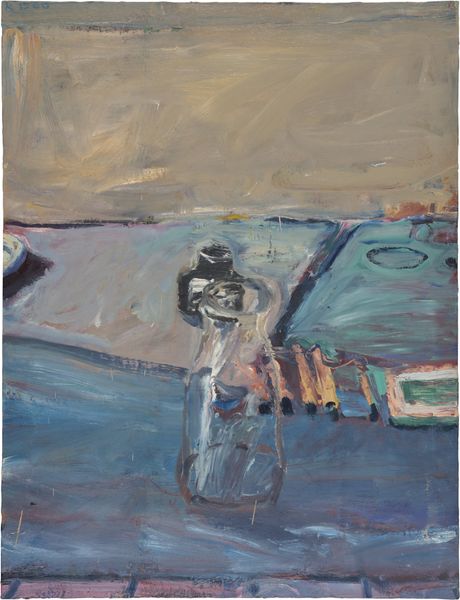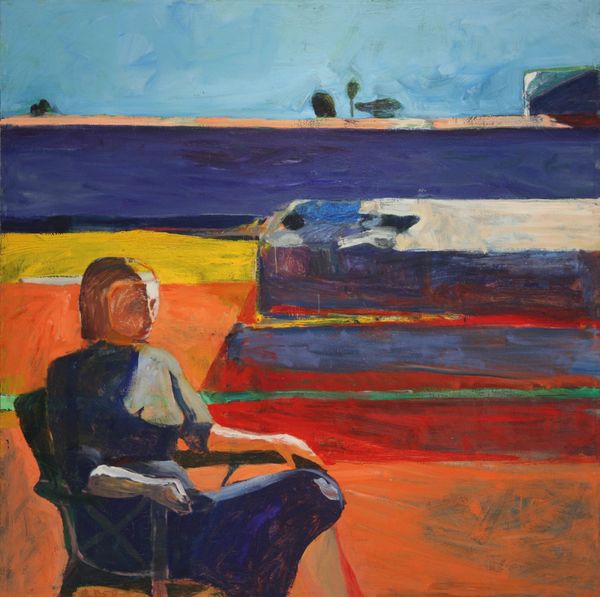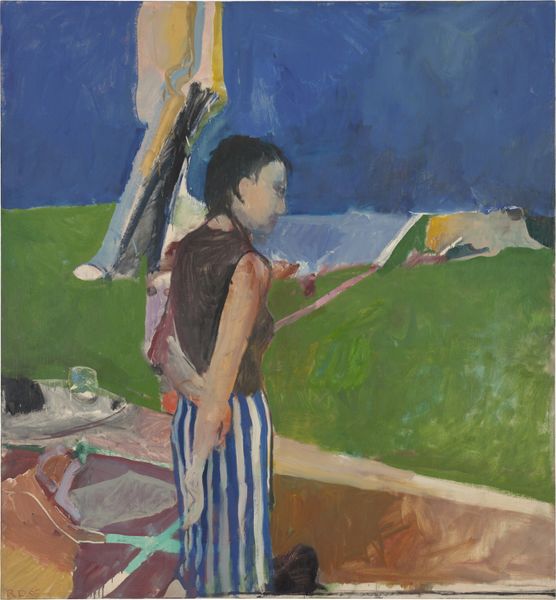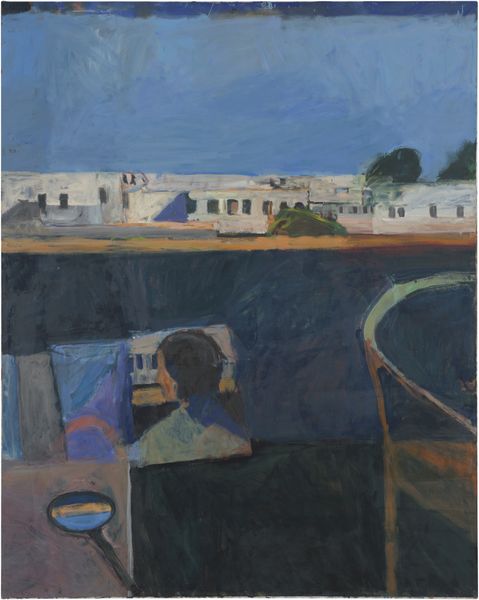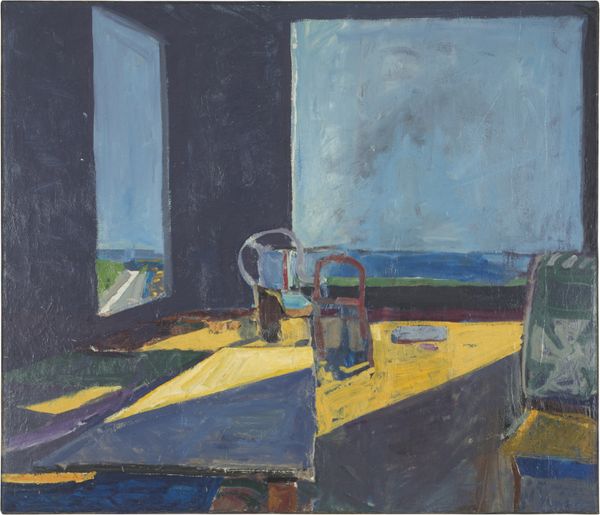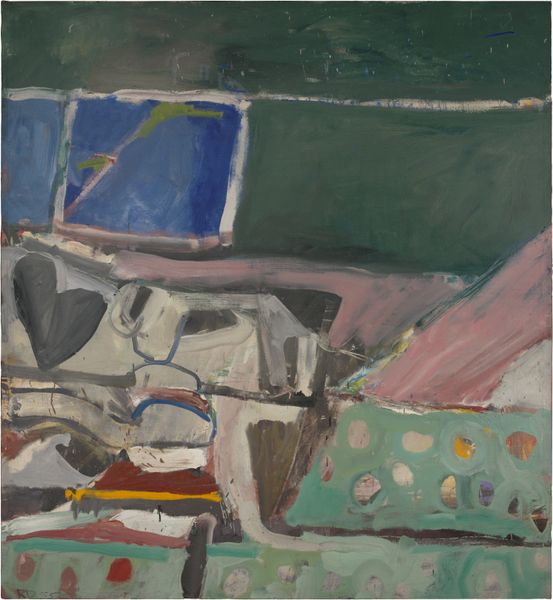
painting, oil-paint
#
painting
#
oil-paint
#
landscape
#
oil painting
#
bay-area-figurative-movement
#
ocean
#
acrylic on canvas
#
cityscape
#
modernism
#
hard-edge-painting
Dimensions: 177.8 x 162.6 cm
Copyright: Richard Diebenkorn Foundation
Curator: We're looking at Richard Diebenkorn's "Ocean from a Window," an oil painting from 1959. Editor: It strikes me immediately with its flattened perspective and that incredible play of blues—very cool and contained. Curator: That containment, I think, is key. Consider Diebenkorn’s context: the Bay Area Figurative Movement, wrestling with representation in the face of abstract expressionism’s dominance. This view is mediated, seen from a particular position—it invites us to question the artist’s place, and our own, in relation to the landscape. The hard edges emphasize boundaries, like the window itself becomes a frame for our consideration of nature and society. Editor: True, but there's more than just representation at play here. Look at how the painting is built: layers of translucent color, broad brushstrokes creating subtle textures. It's less about capturing a photographic reality and more about exploring the inherent properties of paint, light, and form. I am particularly drawn to the foreground color field: what do you make of this abstracted plane? Curator: I would add that these flat, unmodulated surfaces, bounded by stark edges, operate within a distinctly modern vocabulary, challenging traditional landscape painting and instead engaging ideas of industrialisation, spatial relations and social perception in a fast-developing California. We need also to recognize that at the time, social and political restrictions regarding the role of the observer have yet to be extensively discussed. What are we actually able to observe through these rigid constrictions? Editor: It’s true that you perceive those restrictions; to me, it all brings a powerful sense of calm and a meditation on visual harmony, the carefully constructed colour contrasts which activate this seemingly peaceful vista with underlying tension. The powerlines for example: these feel more abstract than obstructive. Curator: A reminder of connection, you might say. Yet even as the landscape seemingly speaks for itself, let’s think about how its simplicity obscures its complexities: environmental concerns, urbanization, the displacement of indigenous populations – they may all sit within what has been discarded or unseen to the artist’s own biases. What stories lay outside of the frame? Editor: It all prompts us to examine not just what is visible, but the nature of seeing itself. Curator: Indeed. I think approaching it from socio-historical angles only helps to add texture and dimensionality.
Comments
No comments
Be the first to comment and join the conversation on the ultimate creative platform.
